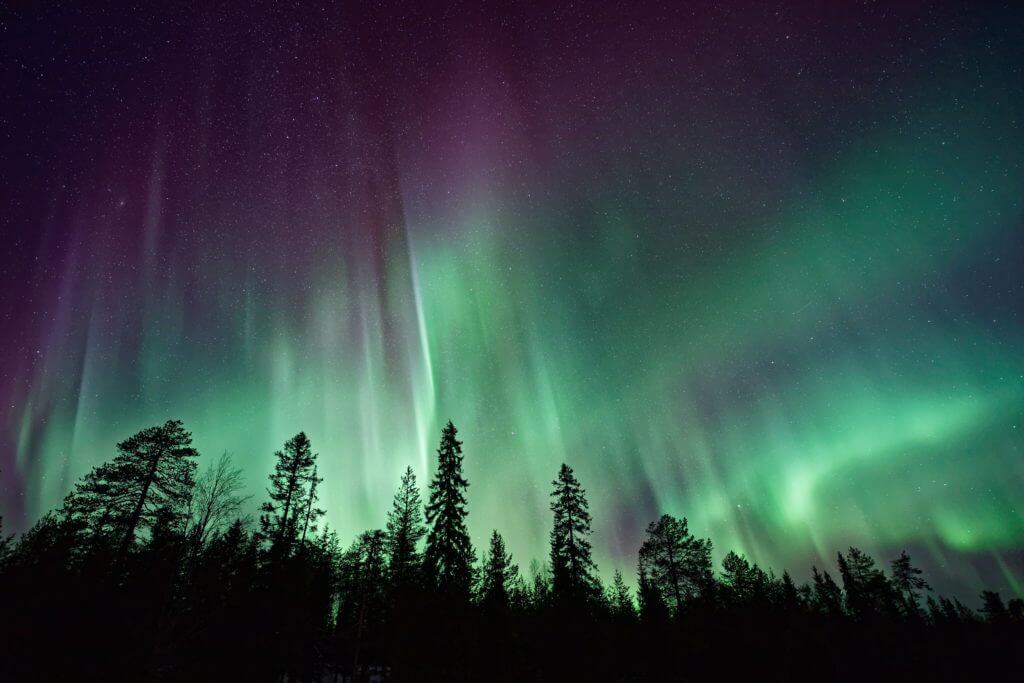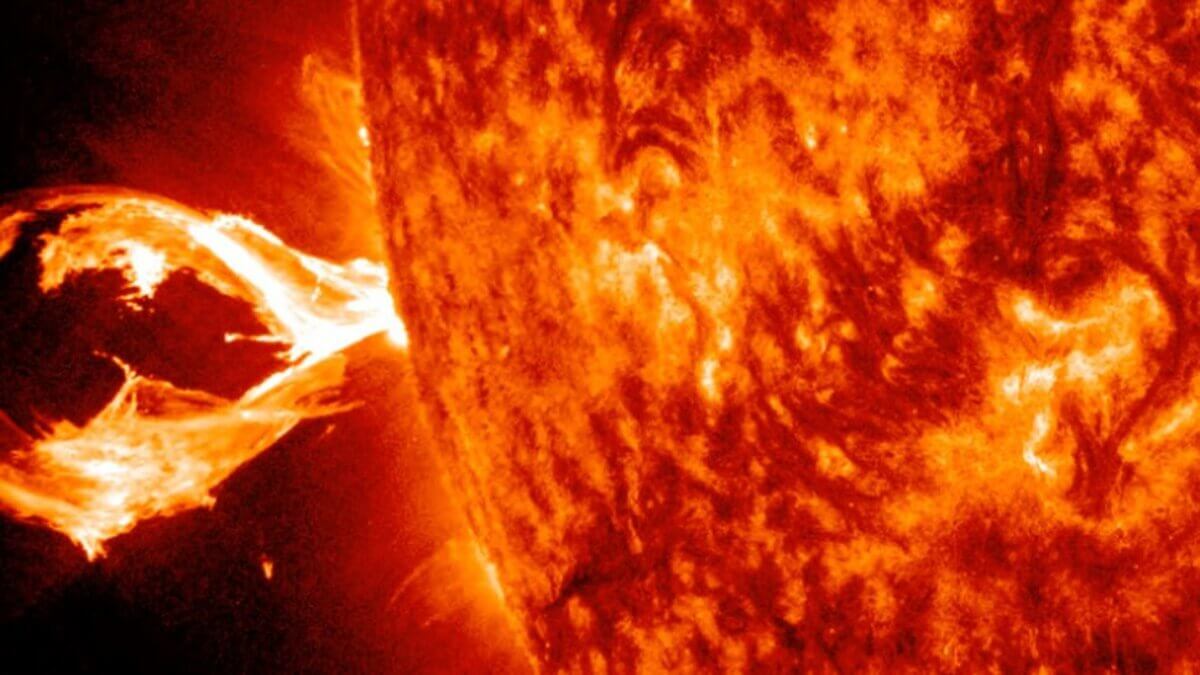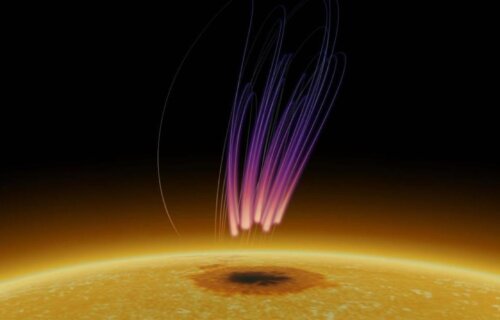NEWARK, N.J. — Seeing the aurora borealis on Earth is hard enough, but what about seeing it on the Sun? A never-before-seen solar phenomenon has been discovered by scientists from the New Jersey Institute of Technology. They were able to detect radio emissions emanating from sunspots on the Sun’s surface.
Sunspots are relatively dark and cold patches on the Sun, and they have long been the subject of scientific curiosity. In this study, researchers from NJIT’s Center for Solar-Terrestrial Research have detailed radio observations of a peculiar aurora-like display occurring 40,000 kilometers above a sunspot. This discovery could potentially reshape our understanding of the sun’s magnetic processes and offer insights into similar phenomena on distant stars.
“We’ve detected a peculiar type of long-lasting polarized radio bursts emanating from a sunspot, persisting for over a week,” says study lead author Sijie Yu, scientists at NJIT-CSTR, in a university release. “This is quite unlike the typical, transient solar radio bursts typically lasting minutes or hours. It’s an exciting discovery that has the potential to alter our comprehension of stellar magnetic processes.”
To grasp the significance of this discovery, it’s essential to understand the parallels with Earth’s own auroral displays, such as the Northern Lights (Aurora Borealis) and Southern Lights (Aurora Australis). These awe-inspiring light shows occur when solar activities disrupt Earth’s magnetosphere, leading to charged particles precipitating into our planet’s polar regions. These particles interact with oxygen and nitrogen atoms in the upper atmosphere, generating intense radio emissions. In the case of the Sun, similar processes seem to be at play above sunspots.

The unique aspect of this discovery is that the radio emissions from sunspots differ from the previously known solar radio noise storms, both in terms of their spectral characteristics and duration. Scientists believe that these emissions are linked to something called “electron-cyclotron maser (ECM) emission,” involving energetic electrons trapped within strong magnetic field regions. Sunspots, being cooler and intensely magnetic areas on the sun, provide an ideal environment for this ECM emission, drawing comparisons with magnetic polar caps on planets and stars.
Interestingly, unlike Earth’s auroras, which emit radio waves at lower frequencies, these sunspot aurora emissions occur at much higher frequencies, ranging from hundreds of thousands to roughly 1 million kHz, due to the Sun’s magnetic field being thousands of times stronger than Earth’s.
The study also challenges the traditional belief that these radio bursts are linked to solar flares, as sporadic flare activity in nearby active regions seems to inject energetic electrons into large-scale magnetic field loops anchored at the sunspot, thereby powering the ECM radio emission above the region.
As the sunspot moves across the sun’s disk, it creates a rotating beam of radio light, resulting in a “cosmic lighthouse effect.”

The discovery of these solar radio emissions, though weaker than Earth’s auroras, bears similarities to stellar auroral emissions observed in the past. This suggests that starspots on cooler stars, akin to sunspots on our Sun, could be sources of certain radio bursts observed in various stellar environments.
“This observation is among the clearest evidence of radio ECM emissions we have seen from the Sun. The characteristics resemble some of those observed on our planets and other distant stars, leading us to consider the possibility that this model could be potentially applicable to other stars with starspots,” says study co-author Bin Chen, associate professor of physics at NJIT-CSTR.
The implications of this insight are far-reaching, as it links the behavior of our Sun with the magnetic activities of other stars. This connection could prompt astrophysicists to reconsider their current models of stellar magnetic activity, potentially leading to a better understanding of phenomena occurring on stars beyond our solar system.
The research team, which included scientists from institutions like the University of Glasgow and the National Radio Astronomy Observatory, employed advanced radio imaging spectroscopy observations from the Karl G. Jansky Very Large Array.
The study is published in the journal Nature Astronomy.
You might also be interested in:
- Best Of The Best Telescopes For Beginners In 2023: Top 5 Stargazers Most Recommended By Experts
- Best Places To See Northern Lights: Top 5 Aurora Borealis Spots Recommended By Travel Experts
- ‘Widespread Blackouts Lasting Months’: Ancient Solar Storm Sheds Light On Sun’s Dangers To Modern Tech

